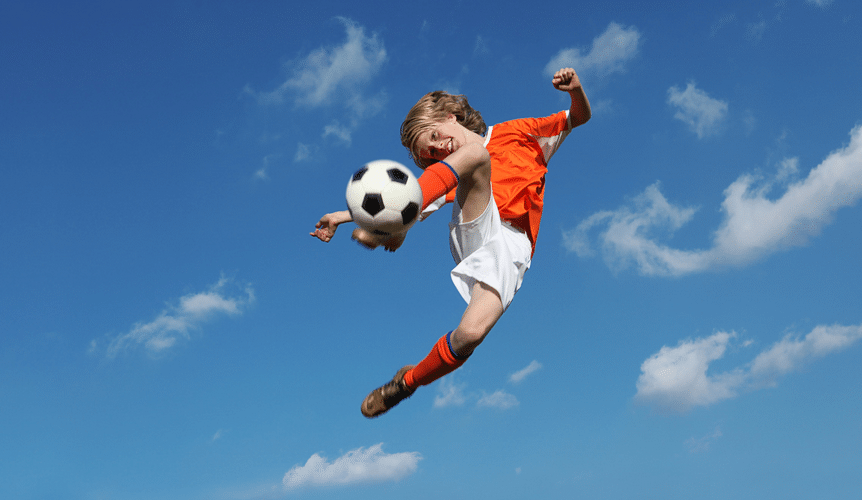Sports readiness means that a child has the physical, mental, and social skills to meet the demands of the sport. It’s important to remember that children develop at different rates. Children are more likely to enjoy and succeed in sports when they have the physical, mental, and social skills required by the sport.
Ages 2 to 5 years
Before age 6 years, most children do not have the basic motor skills for organized sports. Balance and attention span are limited, and vision and ability to track moving objects are not fully mature. Instead, look for other sports activities that focus on basic skills such as running, swimming, tumbling, throwing, and catching. These skills can be improved through active play but do not require organized sports activities. Children at this age have a short attention span and learn best when they can explore, experiment, and copy others.
Ages 6 to 9 years
By age 6 years, most children have the basic motor skills for simple organized sports. However, they may still lack the hand-eye coordination needed to perform complex motor skills and may not yet be ready to understand and remember concepts like teamwork and strategies. Sports can be adapted to be played at a basic level and focus on basic motor skills are the most appropriate. This includes running, swimming, soccer, baseball, tennis, gymnastics, martial arts, and skiing. Sports that require complex visual and motor skills, quick decision-making, or detailed strategies or teamwork (football, basketball, hockey, volleyball) will be difficult unless modified for younger players. The equipment and rules should be appropriate for young children. For example, smaller balls, smaller fields, shorter game times and practices, fewer children playing at the same time, frequent changing of positions, and less focus on scorekeeping.
Ages 10 to 12 years
By ages 10 to 12 years, most children are ready for more complex sports. They have the motor skills and cognitive ability to play sports that require complex motor skills, teamwork, and strategies. Most experts believe that sports at this level should focus on skill development, fun, and participation, not competition. Most children would rather play more on a losing team than less on a winning team.
Some children in this age group may be starting puberty. During this time, the physical differences between children can be dramatic. This can make a difference in what sport is best for your child. Children who start puberty sooner will be temporarily taller, heavier, and stronger. This may give them a physical advantage, but it doesn’t mean they are more talented and will continue to excel in sports.
Other Guidelines
- Get fit and learn a new skill.
- Focus on fun.
- Check out the rules. Equipment and rules should be appropriate for their ages.
- Make sure safety is a priority.
- Keep differences in mind. During puberty, to make sure athletes are well matched in contact sports, consideration should be given to body size and physical maturity as well as chronological age.
- Proceed with caution. Playing only one sport may also prevent a child from developing a variety of motor skills that they would learn from participating in several different sports.
- Wait until your children are ready.
- Find a good sports program.
- Ask your pediatrician.


